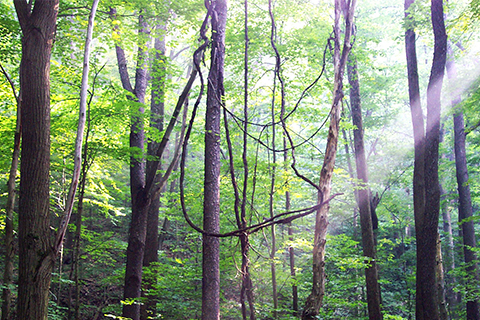In John Muir’s published collection of sketches and descriptions of national parks in 1901, he wrote that, “Thousands of tired, nerve-shaken, over-civilized people are beginning to find out that going to the mountains is going home; that wildness is a necessity; and that mountain parks and reservations are useful not only as fountains of timber and irrigating rivers, but as fountains of life.”
The same sentiment has been felt by many. Ask anyone that spends a lot of time outdoors, and they’ll say being in nature makes them feel better.
Sunlight on your face, the quiet whisper of a gentle breeze bending tree branches, or the rippling sound of water bubbling over rocks in a stream, all have deeply, restorative benefits, not only for your physical health, but your mental health as well. And now, there’s research to prove it.
Studies Show Nature is Good for Mental Health

For more than a decade, numerous research and articles have been published about the health benefits of outdoor recreation.
By now, we’re all familiar with the physical benefits of outdoor recreation on our health, but there is increasing conversation about the mental health benefits.
Many health care researchers and practitioners agree that ecotherapy (green therapy or nature therapy) can provide a wide range of mental health benefits, including:
- Increasing attention, reasoning, and memory
- Reducing stress and anxiety
- Improving sleep quality
- Increasing emotional stability
- Increasing positive feelings about quality of life
Studies also show that more Americans than ever before are stressed, depressed, or filled with anxiety; and many don’t get the help they need -- either from a lack of financial resources, social stigma, or lack of mental health care services.
So, is the prescription to when we’re feeling down or stressed, to head outdoors? The Japanese believe so.
The Japanese Art of Forest Bathing

In 1982, Tomohide Akiyama, the secretary of Japan’s Ministry of Agriculture, Forestry, and Fisheries, invented the term shinrin-yoku, which translates to “forest bathing” during the height of the country’s economic boom as a way to combat depression, anxiety, and suicide.
He believed that the forests could provide valuable health benefits to people who would in turn value the forests.
Forest bathing is a therapeutic practice of immersing oneself in the forest for meditative or mindfulness purposes.
It’s not about hiking or getting to a destination; but about connecting and being present with the rhythms of nature through our senses of sight, hearing, taste, smell, and touch.
The health benefits occur when observing the forest. Just like taking a bath in hot water, participants are encouraged to settle in and relax while in the forest.
While the practice of forest bathing is relatively new, it is growing in popularity world-wide based on its widely proven health benefits of significantly decreasing anxiety, depression, anger, fatigue, and improving sleep by reducing stress-related hormones cortisol and adrenaline.
It’s now its own industry -- being offered as vacation destinations or part of spa packages, and offering certified forest bathing guides; however, none of that is needed to get the benefits for yourself.
How to Experience the Benefits of Forest Bathing

Forest bathing is as simple as it sounds. You go into the woods, breathe deeply, and enjoy the peace and solitude of the forest. No extra money or guides are needed…just some of your time and a place to go.
Luckily, Pennsylvania has 121 free state parks and 20 state forests that offer places for forest bathing. Green spaces in urban areas offer the restorative benefits of forest bathing as well. Gardens, parks, and trees in urban areas all have been proven to have the same stress-reducing qualities.
So, ready to experience it for yourself? Here’s what you need to do:
- Make the time to spend in a forested area. Recommendations range from four hours to as little as 10 minutes in nature to reap the health benefits. Go as often as you can make the time for -- the more time, the extended health benefits.
- Take only the necessities, like something to drink, and insect repellant, sunscreen, a first aid kit, or a blanket or towel to sit on. If you must take your phone, keep it tucked away and the ringer turned off.
- Find a spot based on your physical abilities and where you are removed as much as possible from the sights and sounds your daily life -- ideally a place with lots of trees. Let your body guide you to where it wants to take you. Don’t rush. Walk slowly to your destination, observing the nature around you. Explore what interests you along the way.
- Be still. Take deep breaths and take in your surroundings using your senses. What do you feel, smell, hear, see? Watch for animals and birds. Examine the light coming through, leaves, or tree markings. The goal is to not think about what may be on your mind, but to practice mindfulness -- taking in your present surroundings.
- Take notice of how you feel afterwards. Do you feel more at ease, or were able to focus? Did you sleep better?
Remember, its not about getting to a destination or reaching a goal. It’s just about letting nature in.
Explore different places until you find what helps you become calm and relaxed. Some people may want to be close or on water, others may prefer the deep solitude of a secluded forest, while others may prefer a park bench.
Wherever you choose, connecting with nature will make you healthier and happier.
Find outdoor places to explore at DCNR’s website.